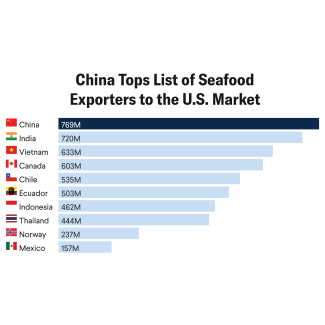Disparities in COVID-19 cases and mortality rates demonstrate – on an unprecedented scale – the sweeping health inequities in the United States that have always existed but are now exposed for the world to see.
Income tends to be the biggest predictor of differences in health outcomes, and it is no different for COVID-19. Among Medicare beneficiaries, individuals whose income was low enough to make them eligible for Medicaid were four times more likely to be infected or hospitalized with COVID-19 than those on Medicare alone. As the pandemic confronts people around the country with economic uncertainty, it is unsurprising that income would influence their vulnerability to COVID-19. The United States already has the highest income inequality among the G-7 countries, and income inequality in the country has steadily risen since 1980. Further, as of 2018, households at the top 10 percent had incomes about 13 times that of households at the bottom 10 percent.
As of 2018, households at the top 10 percent had incomes about 13 times that of households at the bottom 10 percent
Race is also a major determinant of health outcomes, and the pandemic has amplified the connection. Black Americans are dying from COVID-19 at nearly three times the rate of white Americans, and American Indian, Native, Asian, Hispanic, and Latinx people are also dying at disproportionate rates. In high-poverty areas, these racial disparities in COVID-19 mortality are even starker: poor counties with substantial non-white populations have a death rate more than nine times greater than poor counties with substantial white populations.
COVID-19 has laid bare the tragic reality that it is bad for your health to be poor in the United States, and it is even worse to be a poor person of color. But why do these preventable and avoidable health inequities along economic and racial lines exist in the first place?
The answer lies in the social determinants of health, which shape the conditions in which people are born, live, learn, and work. Social determinants are responsible for the inequities in health care, housing, employment, education, and social support that make people living in certain communities more vulnerable to COVID-19.
For example, consider the "three Ws" that public health experts recommend for slowing the spread of COVID-19: wear a mask, watch your distance, and wash your hands. Social determinants influence the extent to which people can adhere to these public health guidelines, and consequently, their relative risk of COVID-19:
Wear a mask. Research shows that masks reduce the likelihood of transmitting and catching COVID-19 by as much as 80 percent. For people in low-income neighborhoods, who more likely to work outside the home in contact with many people and less likely to have workplace protections, this safeguard is especially important. But not all workplaces, cities, or states require employees or customers to wear masks, meaning that these workers are more likely to encounter people who do not consistently or appropriately wear face coverings. Some essential workers may be required to spend substantial amounts of time indoors in poorly ventilated areas.
At least 64 million Americans live in multigenerational homes
Watch your distance. Physical distancing also reduces the risk of COVID-19 but it isn't always an option. For the at least 64 million Americans who live in multigenerational homes – most of whom are Asian, Hispanic, or Black –physical distancing at home is impractical if not impossible. Physical distancing is also a challenge for people living with poor housing conditions such as overcrowding. Take Los Angeles county: as a consequence of their expensive housing market, Los Angeles has the highest percentage of overcrowded homes of any large metropolitan area in the United States. It is common there for working-class families of five or more people to share a small apartment, creating conditions that facilitate the spread of infection. COVID-19 cases have recently surged in Los Angeles: roughly 1 in 80 people in the county have COVID-19 and a person dies from COVID-19 every eight minutes.
Wash your hands. Handwashing is another important measure for preventing disease, including COVID-19. Yet more than two million Americans do not even have access to clean water. The barrier to handwashing is especially acute for Native American households, who are 19 times as likely as white households to lack indoor plumbing. This issue is more pronounced globally: two out of every five people [PDF] around the world do not have access to a handwashing facility with soap and water. There are at least 1.5 million people in prison in the United States, where handwashing is challenging, and a disproportionate number of this population is poor and/or people of color. Limited access to soap and water can make handwashing infeasible, and these crowded unsanitary conditions have exposed more than one in five incarcerated men and women to COVID-19.
These "three Ws" of COVID-19 prevention illustrate how social determinants shape health outcomes. Social and economic circumstances such as housing conditions, work environment, access to clean water, and income dramatically impact vulnerability to COVID-19.
While public health experts have long-acknowledged the significance of social determinants, the COVID-19 pandemic further underscores their importance for local, state, and federal policymaking. Inequities in social determinants are the result of inadequate social policies that have failed to reduce poverty and eliminate systemic racism. We have underinvested in programs to address poverty, increase workplace safety, and ensure clean water and air, affordable housing, and access to health care. This underinvestment exacerbated the scale of the COVID-19 pandemic in the United States and contributed to disparities in hospitalization rates and mortality.
Inadequate social policies that have failed to reduce poverty and eliminate systemic racism
In the short term, local, state, and federal policymakers must focus on containing the pandemic and addressing its immediate consequences, including ensuring equitable access to the vaccine. In the medium- and long-term, we should shift the urgent attention devoted to COVID-19 to policies and programs that prioritize social determinants and reduce inequities. While the United States faces challenges, there are parallels around the world, and a global call to action for poverty alleviation and equity would benefit health for all.
With more than 425,000 lives lost to date to COVID-19 in the United States, the stakes for inaction are high. Many economists and public health experts warn that COVID-19 is a wedge that is further worsening inequities. There is an opportunity to ensure that this does not happen. Instead, COVID-19 could prompt us to pursue a more just and equitable future. Policymakers at all levels can dismantle – once and for all – the inequities that COVID-19 has illuminated.




